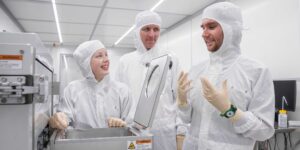
Autodesk’s Chief Scientist, Daron Green, has issued a stark warning about the potential for “disintermediation” as artificial intelligence continues to evolve. Speaking in Sydney, Green emphasized that while AI is set to revolutionize design and manufacturing in Australia, it also poses a risk to software companies by potentially severing direct connections with their customers.
Green highlighted that as language-based AI interfaces become the norm, companies might lose control over how users interact with their tools. “In media and entertainment, there’s a broad recognition that they’re going to get disrupted,” Green told TechDay, pointing to the myriad ways AI can generate content.
AI’s Impact on Design and Manufacturing
The shift in how Autodesk Research collaborates with clients reflects this tension. Green explained that studios often guard their digital assets, making it difficult to train domain models. “We sort of have to erase the memory of the AI system,” he noted, describing instances where Autodesk provides untrained models for partners to enhance, only to find data limitations.
Green underscored the importance of scale in AI training. Citing a Google study, he noted that properties like humor or sarcasm only emerge when models are trained on vast datasets.
“You need to get to a certain scale for it to appear to show the properties of intelligence,” he said.
Within Autodesk, AI has already transformed engineering practices. Developers are conducting multiple experiments daily with AI-assisted coding. “You could say AI is going to remove their jobs, or it makes them incredibly more productive. And that’s what we’re seeing,” Green said.
Innovations and Challenges Ahead
Some AI advancements are already integrated into Autodesk products used in Australia. Green mentioned features like automated sketch constraints in Fusion, which reduce tedious tasks, and models that identify parts like nuts and bolts. “Nobody wants to be experts in picking out nuts and bolts,” he added.
Looking ahead, Green discussed upcoming projects like B-rep Gen, which promises robustness and innovation. However, the real disruption, he fears, comes from new standards that simplify connecting large language models to specialized software. “The new interface is the prompt,” he warned. “We’ve been disintermediated.”
To combat this, Green believes software firms must radically rethink human-computer interaction. Traditional interfaces may become obsolete as creation increasingly begins with speech or images. “We need to provide just a fantastically compelling experience,” he said, suggesting that this shift could democratize design tools, reaching a broader audience.
Future Directions and Industry Implications
Green envisions AI moving beyond geometry and physics to model user intent and experience. “Most software companies don’t have intelligence that really characterizes their user base,” he said. He foresees systems that understand a manufacturer’s policies or a designer’s specialties, tailoring options accordingly.
He also sees potential in embedding intelligence related to ergonomics and acoustics into software. “Surely we should be able to build some of that intelligence into our software,” he remarked, aspiring for systemic integration.
While timelines remain uncertain, Green noted that technological advancements are accelerating. “These waves are coming quicker,” he observed, urging Australian companies to invest in AI expertise and experimentation. “You assess where you are as a company by experimenting like crazy,” he advised.
Autodesk has reorganized to speed up research-to-product transitions, and Green encouraged attention to its annual Design and Make report, highlighting sustainability and AI’s role in addressing challenges.
Despite the risks of disintermediation, Green’s outlook is expansive. He envisions intent-aware systems and AI applications from individual parts to city-scale projects. “The opportunities are just huge, absolutely huge,” he concluded, aiming for a future where users can seamlessly express their needs and have them understood.





